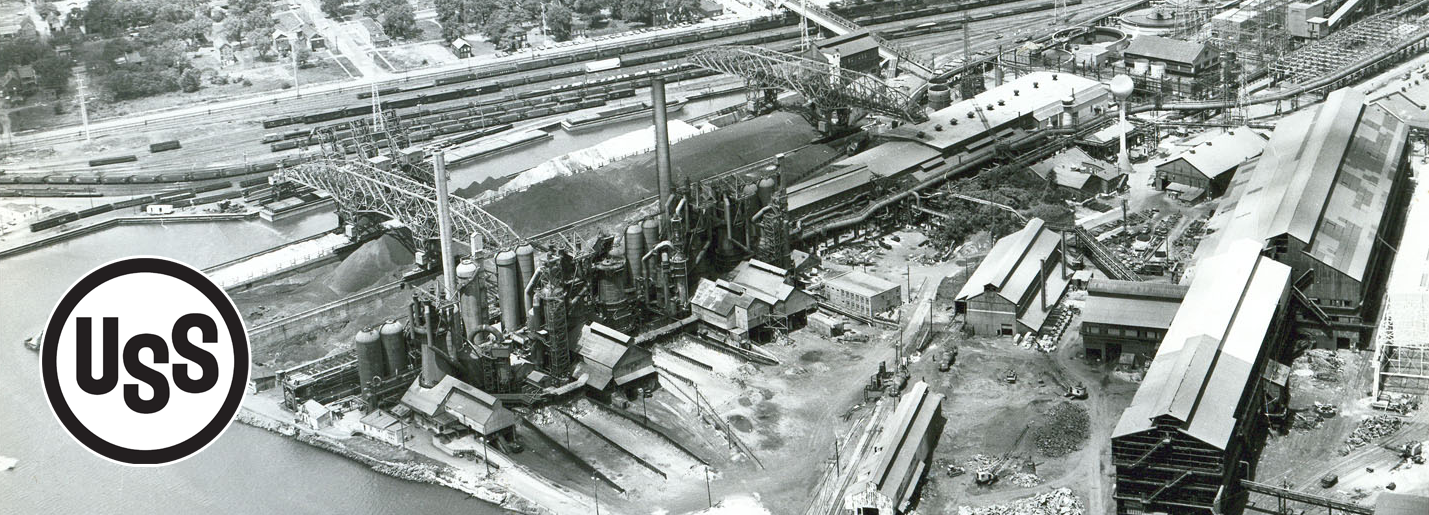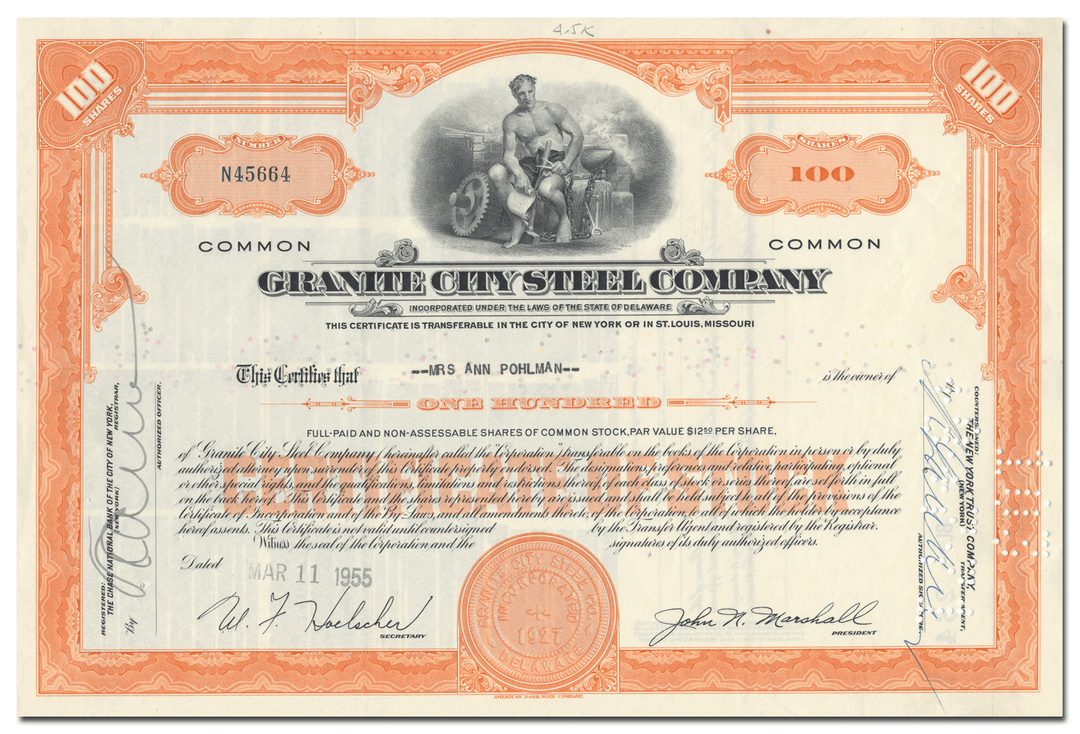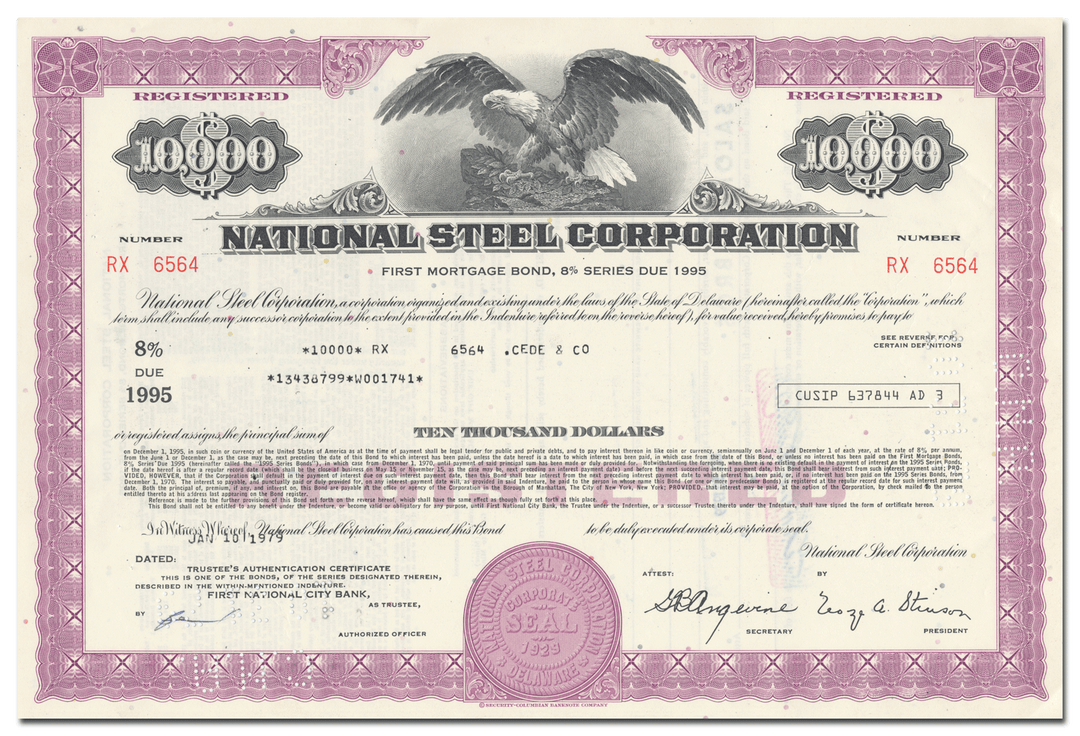
J. P. Morgan and Elbert H. Gary founded United States Steel in 1901 (incorporated on February 25) by combining the steel operations owned by Andrew Carnegie with Gary's Federal Steel Company and several smaller companies for $492 million. It was capitalized at $1.4 billion, making it the world's first billion-dollar corporation. At one time, U. S. Steel was the largest steel producer and largest corporation in the world. In 1907 it bought one of its largest competitors, the Tennessee Coal, Iron and Railroad Company which was headquartered in Birmingham, Alabama.
This led to the company being listed on the Dow Jones Industrial Average, doing so by taking the place of Tennessee Coal, Iron and Railroad Company. The federal government attempted to use federal antitrust laws to break up U. S. Steel in 1911, but that effort ultimately failed. Time and competitors have, however, accomplished nearly the same thing. In its first full year of operation, U. S. Steel made 67 percent of all the steel produced in the United States. It now produces less than 10 percent.
The Corporation, as it was known on Wall Street, always distinguished itself to investors by virtue of its size, rather than for its efficiency or creativeness during its heyday. In 1901, it controlled two-thirds of steel production. Because of heavy debts taken on at the company's formation — Carnegie insisted on being paid in gold bonds for his stake — and fears of antitrust litigation, U. S. Steel moved cautiously. Competitors often innovated faster, especially Bethlehem Steel, run by U. S. Steel's former first president, Charles M. Schwab. U. S. Steel's share of the expanding market slipped to 50 percent by 1911.
U. S. Steel's production peaked at more than 35 million tons in 1953. Its employment was greatest in 1943 (during World War II) when it had more than 340,000 employees; by 2000, however, it employed 52,500 people. The federal government has also intervened on other occasions to try to control U. S. Steel. President Harry S. Truman attempted to take over its steel mills in 1952 to resolve a crisis with its union, the United Steelworkers of America. The Supreme Court of the United States blocked the takeover by ruling that the president did not have the constitutional authority to seize the mills (see Youngstown Sheet & Tube Co. v. Sawyer, 343 U.S. 579 (1952)).
President John F. Kennedy was more successful in 1962 when he pressured the steel industry into reversing price increases that Kennedy considered dangerously inflationary. The federal government prevented U. S. Steel from acquiring National Steel in 1984 and political pressure from the United States Congress forced it to abandon plans to import British Steel slabs. It finally acquired National Steel's assets in 2003 after National Steel went bankrupt. U. S. Steel acquired Marathon Oil in 1982, as well as Texas Oil & Gas several years later. It reorganized its holdings as USX Corporation in 1986, with U. S. Steel (renamed USS, Inc.,) as a major subsidiary.
At the end of the 20th century, the corporation found itself deriving much of its revenue and net income from its energy operations, so U. S. Steel eventually spun off Marathon and other non-steel assets (except Transtar) in October, 2001.












